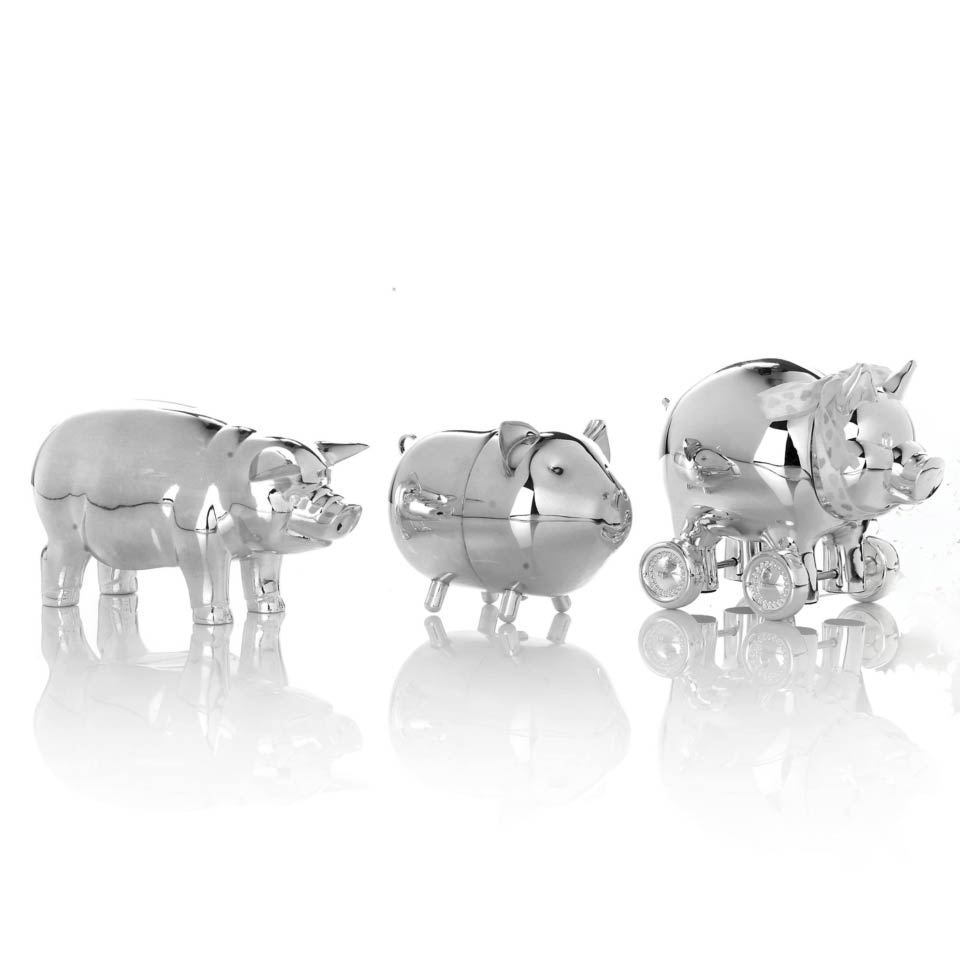
Lenox Corporation
June 7, 2015
• 9:59 AM
• 3,442 days ago

Lenox Corporation
June 7, 2015
• 9:59 AM
• 3,442 days ago
Did you know the piggy bank originated from the 15th century?
In Europe, in the 15th century, nearly all house wares and other household items made from pottery were made out of orange clay called Pygg Clay. This included the containers made to hold small items such as the coins that workers earned each day. The coins would remain in those “pygg jars” until they were needed, so that they wouldn’t be lost.
Interestingly, the name of the barnyard animal did not become “pygg” (or today’s “pig”) until the 18th century. Though you might have been under the impression that piggy banks were named after the animal, the truth of the matter is actually the other way around.
In the 18th century, a potter shaped a pygg jar to look like a pig. People started to use them to save their coins and called them pygg banks. Soon, the name of the bank became associated with the animal, which was soon labeled with that same word.
Traditionally, the banks were designed so that coins could be dropped into them, but the only way to take them back out was to smash the piggy bank. This was meant to help to encourage people to keep their savings, instead of spending it.Ceramics and metals are often the material of choice for modern piggy banks, and while they have kept their traditional name, they come in many different shapes outside of the traditional pig. Common examples include teddy bears, and baby blocks. Still, the timeless pig shape remains ever popular.
In Europe, in the 15th century, nearly all house wares and other household items made from pottery were made out of orange clay called Pygg Clay. This included the containers made to hold small items such as the coins that workers earned each day. The coins would remain in those “pygg jars” until they were needed, so that they wouldn’t be lost.
Interestingly, the name of the barnyard animal did not become “pygg” (or today’s “pig”) until the 18th century. Though you might have been under the impression that piggy banks were named after the animal, the truth of the matter is actually the other way around.
In the 18th century, a potter shaped a pygg jar to look like a pig. People started to use them to save their coins and called them pygg banks. Soon, the name of the bank became associated with the animal, which was soon labeled with that same word.
Traditionally, the banks were designed so that coins could be dropped into them, but the only way to take them back out was to smash the piggy bank. This was meant to help to encourage people to keep their savings, instead of spending it.Ceramics and metals are often the material of choice for modern piggy banks, and while they have kept their traditional name, they come in many different shapes outside of the traditional pig. Common examples include teddy bears, and baby blocks. Still, the timeless pig shape remains ever popular.
•
1
Comments:


Bridge: